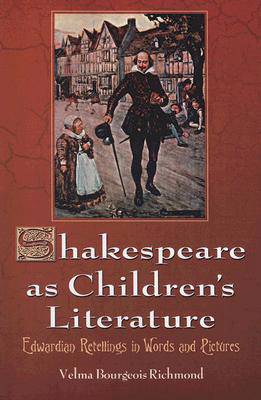
- Afhalen na 1 uur in een winkel met voorraad
- Gratis thuislevering in België vanaf € 30
- Ruim aanbod met 7 miljoen producten
- Afhalen na 1 uur in een winkel met voorraad
- Gratis thuislevering in België vanaf € 30
- Ruim aanbod met 7 miljoen producten
Shakespeare as Children's Literature
Edwardian Retellings in Words and Pictures
Velma Bourgeois RichmondOmschrijving
Although William Shakespeare is widely regarded as the greatest writer in the English language, he traditionally receives little notice in studies of children's literature. However, there is a fascinating relationship between Shakespeare and children's interests, and the Bard's works have been successfully adapted for children's use over several centuries.
This book continues and parallels the author's previous study, Chaucer as Children's Literature, as part of a greater endeavor to evaluate the significance of traditional literature retold as children's literature in modern English studies. It examines the ways in which William Shakespeare's stories have been adapted for children, particularly in Mary and Charles Lamb's Tales from Shakespeare, which was almost immediately recognized as a classic of children's literature when it was first published in 1807. The author describes the significance of the Lamb's Tales as the pre-eminent children's adaptation of Shakespeare's literature, focusing particularly on the lavishly illustrated Edwardian editions which used pictures to convey Shakespeare's stories for children.
Other topics include Victorian alternatives to the Lambs' stories, including anthologies from David Murray Smith, Abby Sage Richardson, and Mary Seymour; the lavish illustrations of Shakespeare's stories found in antique English textbooks; Shakespeare in nursery books, including sophisticated collections from Mary Macleod, Thomas Carter, Alice S. Hoffman, and other noted authors; and Shakespeare in multi-volume American collections, including The Children's Hour, Journeys through Bookland, and The Junior Classics.
Specificaties
Betrokkenen
- Auteur(s):
- Uitgeverij:
Inhoud
- Aantal bladzijden:
- 371
- Taal:
- Engels
Eigenschappen
- Productcode (EAN):
- 9780786437818
- Verschijningsdatum:
- 14/05/2008
- Uitvoering:
- Paperback
- Formaat:
- Trade paperback (VS)
- Afmetingen:
- 160 mm x 228 mm
- Gewicht:
- 508 g

Alleen bij Standaard Boekhandel
Beoordelingen
We publiceren alleen reviews die voldoen aan de voorwaarden voor reviews. Bekijk onze voorwaarden voor reviews.











